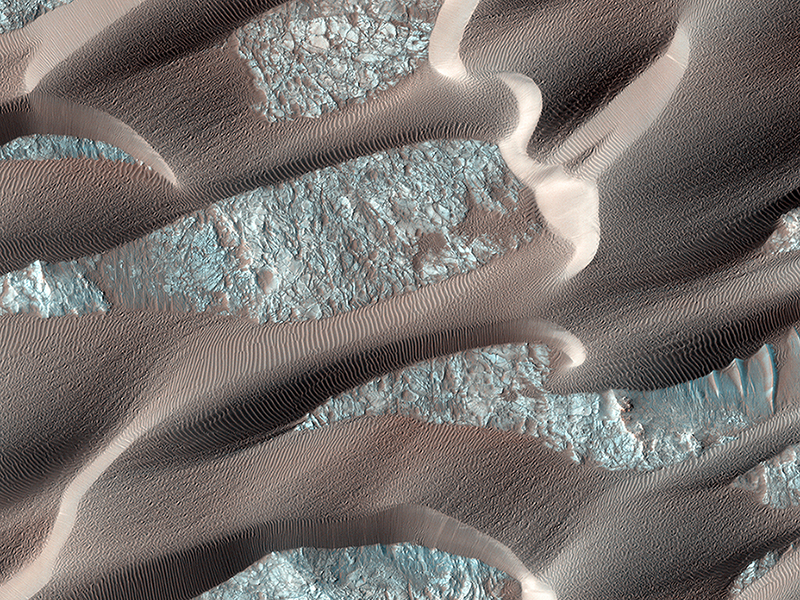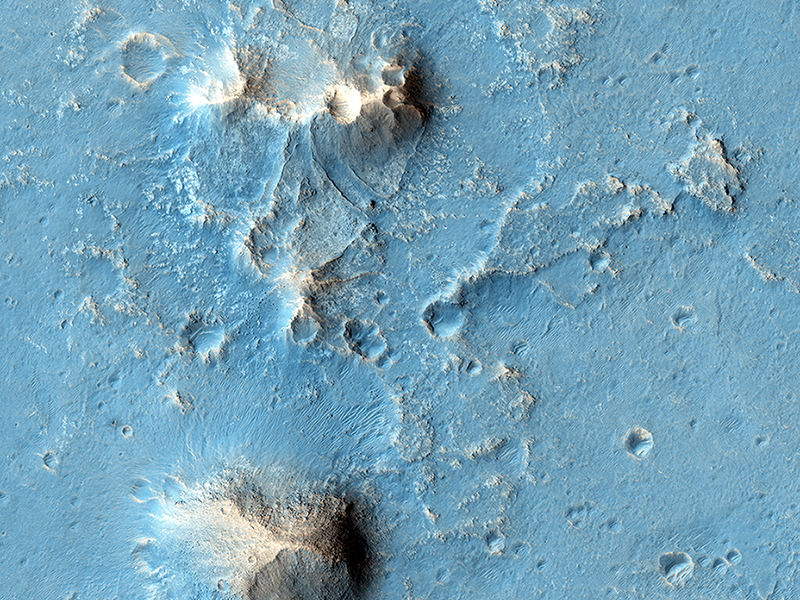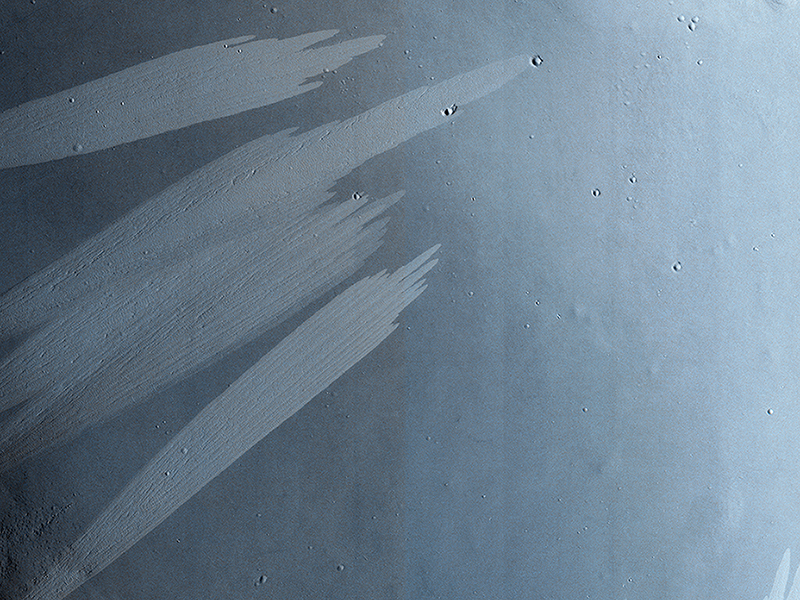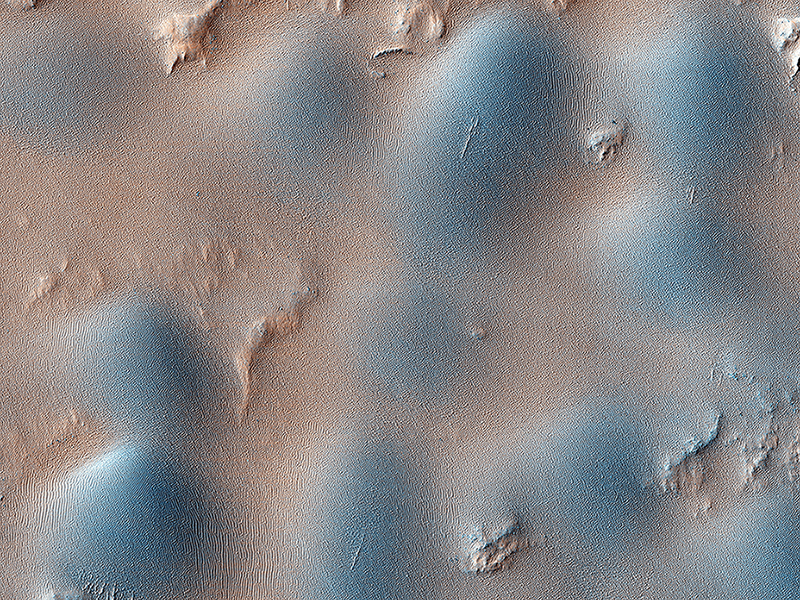Nathan Bridges wrote:Continual Dune and Ripple Migration in Nili Patera (ESP_028575_1890) (HiClip)
Nili Patera is a region on Mars in which dunes and ripples are moving rapidly. HiRISE continues to monitor this area every couple of months to see changes over seasonal and annual time scales.
Here we see obvious activity over a span of less than two Earth years. Three prominent changes are obvious: 1) the dunes are migrating, with position differences of a few meters in some areas; 2) the ripples on the surfaces of the dunes have undergone so much change that they cannot be reliably tracked over this time interval; and 3) the lee faces of the dunes exhibit new avalanches.
These results show that Nili Patera, and other regions on Mars, are areas of active sand migration and landscape erosion.
Sharon Wilson wrote:Possible Future Mars Landing Site in Oxia Planum (ESP_037070_1985) (HiClip)
Oxia Planum is broad clay-bearing surface between Mawrth and Ares Vallis that has been proposed as a future landing site on Mars.
Remnants of a possible fan or delta near the outlet of Coogoon Vallis is a potential science target at this location.
This is a stereo pair with ESP_037136_1985.
Maria Banks wrote:Bright Slope Streaks in Arabia Terra (ESP_038044_1965) (HiClip)
This observation shows bright and dark slope streaks in craters in the Arabia Terra region.
Slope streak formation is among the few known processes currently active on Mars. The cause of slope streaks is still debated, and both dry and wet processes have been proposed to explain their formation. They are most commonly believed to form by gravity-driven movement of extremely dry sand or very fine-grained dust in an almost fluidlike manner (analogous to a terrestrial snow avalanche) exposing darker underlying material.
The darkest slope streaks are the youngest and can be seen to cross cut and lie on top of the older and lighter-toned streaks. The lighter-toned streaks are believed to be dark streaks that are brightening with time as new dust is deposited on their surface. Where they occur, dark slope streaks are typically more plentiful than the bright streaks. However in this area, distinct bright slope streaks appear to be more plentiful, especially in the two smaller craters on either side of the larger crater in the center of the image.
Maria Banks wrote:Dome and Barchan Dunes in Newton Crater (ESP_038117_1385) (HiClip)
This observation shows a small sand dune field on the floor of Newton Crater, an approximately 300 kilometer (130 mile) wide crater in the Southern hemisphere of Mars.
The image shows both dome and barchan dunes. Both these types of dunes are also found on Earth. Barchan dunes in particular are common on Earth, and are generally crescent-shaped with a steep slip face bordered by horns oriented in the downwind direction. Barchan dunes form by unidirectional winds and are good indicators of the dominant wind direction.
In this case, the horns of the barchan dunes are not very distinct but appear to indicate that the strongest winds blew approximately southeast to northwest. Note the pattern the dunes form around a bright streak in the downwind direction behind a crater in the center of the image.
Credit: NASA/JPL/University of Arizona
<< Previous HiRISE Update



